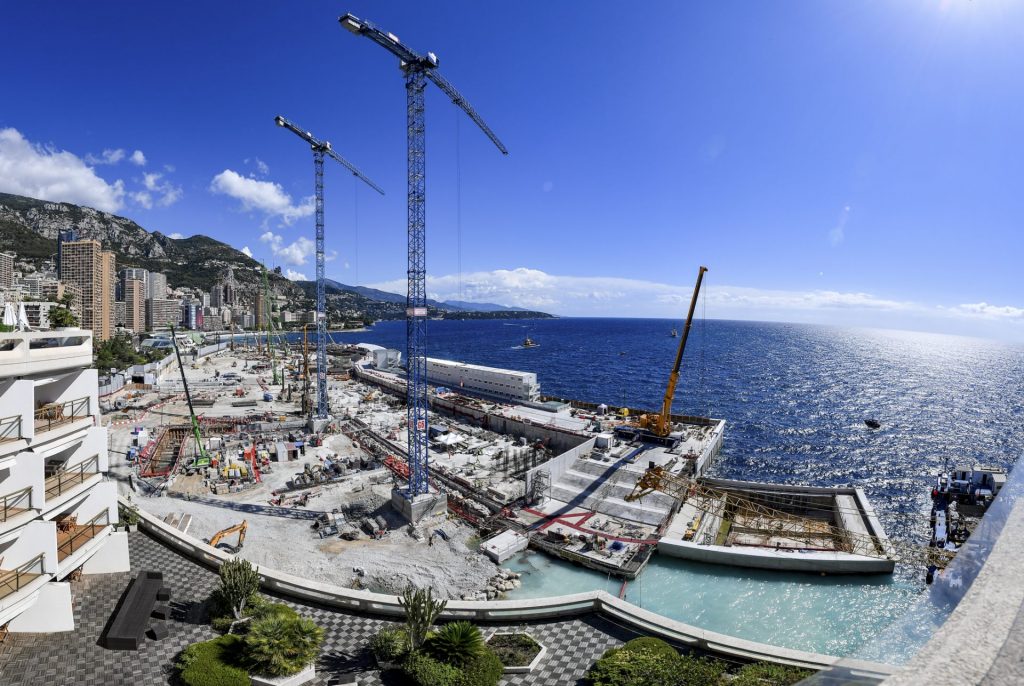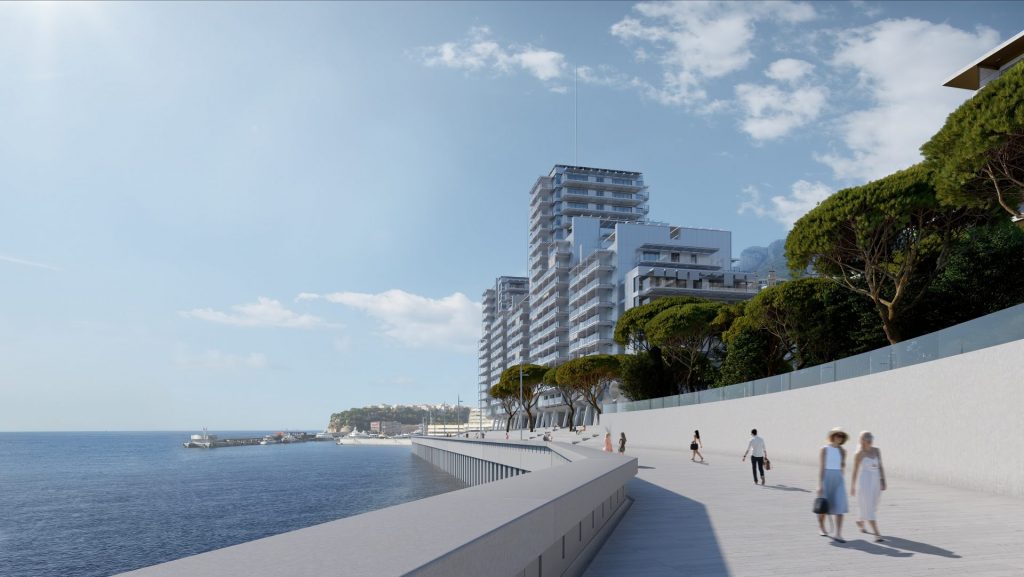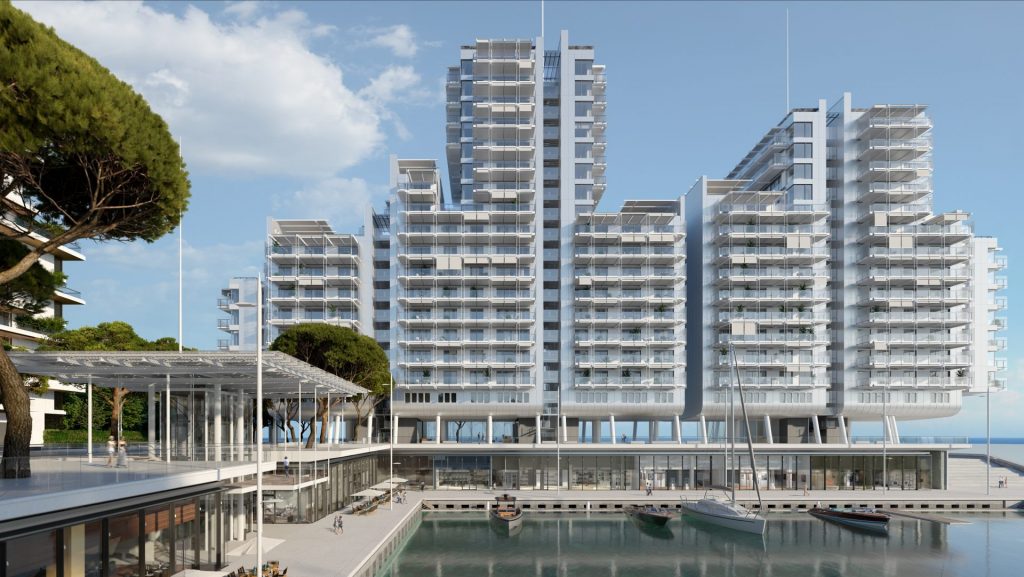6 hectares. That is what Monaco is about to gain in addition to its current territory. Built on the sea and expected for 2025, Mareterra is the future district located between the Grimaldi Forum and the Fairmont Hotel’s famous underground tunnel popularized on television by the Monaco F1 Grand Prix. Sophisticated and innovative, this brand new eco-friendly neighborhood is bound to re-shape Monaco and give it a fresh boost.
Mareterra has been conceived as an exclusively pedestrian surface, featuring a one-hectare public park, luxury housing including waterfront villas and multi-tenant buildings, public walkways, paths along the coast or in the district, a marina of 30 berths, an underground public car park, office and retail spaces… Famous Italian architect Renzo Piano has designed a series of ‘floating’ seaside residences and is personally involved in the construction of the “Grand Immeuble” and the marina. The project features rooftops equipped with solar cells and lighting solutions that avoid the use of classic shutters, in order to preserve the building’s glass facade and views out to the sea. Energy consumption will be greatly optimized with 40% assured by renewable energy. Mareterra will also include an extension of the Grimaldi Forum Convention Center, cycling paths and an electric-bike station as part of Monaco’s will to promote soft and sustainable mobility. Waste management happens underground, to limit any noise pollution while recycling containers will be accessible everywhere in the district.

Building the Mareterra district is in progress © Xavier Rogeroni
Monaco had already reclaimed land back in the 1970ies in the Fontvieille district but the construction process used for Mareterra is much more innovative. The maritime infrastructure designed and made by multinational construction firm Bouygues Travaux Publics and the project management company Anse du Portier, consists of 18 reinforced hollow caissons. Floated to Monaco from Marseille, where they were made, they were gradually placed on site and filled up with cement in order to form a belt that has the shape of the existing land, for a natural rendering. Extra precautions were taken for the construction, including a 5 meter high sound-insulation wall erected along the 500 meters of shoreline near the worksite and 6 meters of sound-panels installed throughout the work site to measure the level of sound generated in real time and signal the need for a reduction of works to keep noise disturbance at a minimum. Arrangements were also made to divert any wildlife away from the worksite and from operational noise.

Artist’s impression of the new district
However, the most striking with this groundbreaking project is the particular attention and respect given to the environment. It abides to the strict environmental guidelines issued by HSH Prince Albert II of Monaco and His government, as the eco-district is situated between the Larvotto and Spélugues Marine Reserves, both protected by international and European regulations, as well as Monaco’s strict legislative protection. Surveying and analysis were performed in advance of the construction to determine potential environmental impacts. A committee of experts, scientists and marine biologists prepared reports identifying measures to avoid, reduce, and compensate for the impacts of the construction site, and to reduce the overall environmental impact of the project. For 9 months, marine teams worked to relocate 500 square meters of the existing Posidonia meadows, as well as nacre (mother of pearl), from the work site to the neighboring areas and reserves. Additionally, two anti-turbidity screens have been installed in order to protect the adjacent marine reserves. Finally, a network of sensors measures water quality in real time throughout each phase of work. In case there is a risk, the level of work will be reduced until it goes back to normal.

Artist’s impression of the new district
As expressed by Prince Albert II of Monaco Himself, “A panel of experts dedicated to protecting Monaco’s existing and future biodiversity and environmental resources will closely monitor this project, throughout each phase. With its exceptional environmental standards, I hope that the creation of Monaco’s new eco-district will become a reference point for other development projects around the world, particularly those in maritime environments.” This is Monaco’s manifesto for this new milestone in its history.
